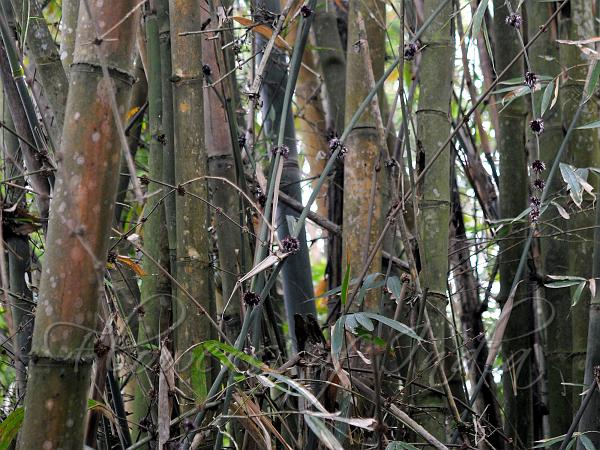|
| Tama Bamboo |
|

|

| File size | 874260 |
| Original date | 5/10/18 11:26 AM |
| Resolution | 0 x 0 |
| Flash | Flash did not fire, auto |
| Focal length | 60.0mm |
| Exposure time | 1/125s |
| Aperture | 2.8 |
| Focus Distance | |
| Metering Mode | Multi-segment |
| Camera make | NIKON CORPORATION |
| Camera model | NIKON D3200 |
| Sensor type | OneChipColorArea |
|
|
|
|
Photo: |
Botanical name: Dendrocalamus hamiltonii Family: Poaceae (Grass family)
Synonyms: Sinocalamus hamiltonii
Synonyms: Sinocalamus hamiltonii
Tama Bamboo is a species of bamboo, 1215 cm in
diameter and growing up to 15-18 m in height. It is a tall, dull
green-colored bamboo species with drooping tops, which grows in
thickets consisting of a few closely growing stems. Stems are dull
green covered with whitish-brown hairs, which become dull
brownish-green when dry. Whitish bands occur below and above the nodes.
Stems are noticeably zig-zag. Branching occurs from the base to top.
Aerial roots are present in all nodes. Stem walls are 0.5-1.5 cm thick.
Stem sheaths are green when young and turn yellowish brown when mature,
and are long and gradually tapering upwards from a flattened base. The
sheath proper is 18-45 cm in length and 15-28 cm wide. Blade length is
8-20 cm. Auricles are absent. Upper surfaces of the sheaths are covered
with patches of blackish-brown hairs. Sheaths fall off early.
Pseudospikelets are 10-25 per node, clusters 1-4 cm in diameter.
Spikelets are dark purple, 8-10 x 3-5 mm, hairless; fertile florets
2-4. Glumes 1 or 2; lemma 5-7 x 6-7 mm, tip long with a short sharp
point. Anthers are yellow or red-purple, tip apiculate. Style is about
4.5 mm; stigmas 1-3, red-purple. Tama Bamboo is found in East Himalaya,
particularly Assam. It also grows in Bangladesh, Cambodia, SC China,
Laos, Myanmar, Nepal, Thailand, Vietnam.
| Identification credit: Manoj Chandran | Photographed in Kalimpong, West Bengal. |
• Is this flower misidentified? If yes,